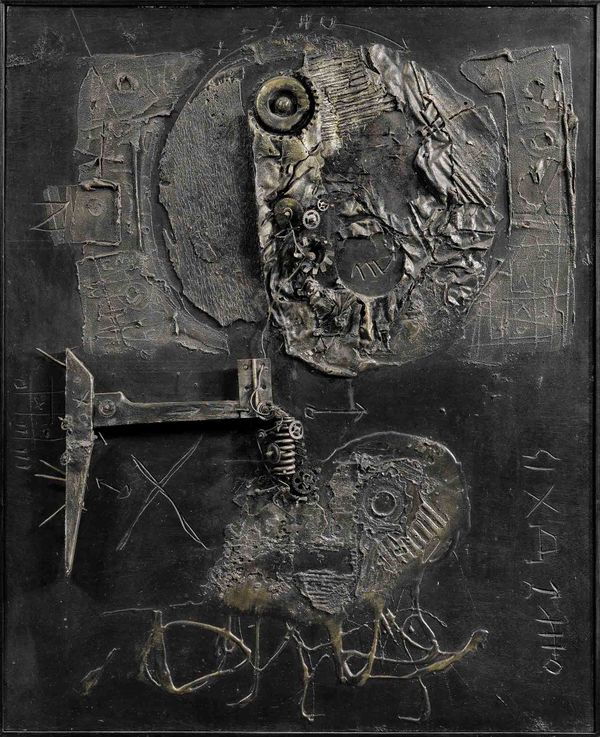Igael Tumarkin is an Israeli painter and sculptor. Born in Dresden, Germany in 1933, Tumarkin's family settled in Israel when he was two. After completing his service in the navy, Tumarkin studied under the sculptor Rudy Lehman in Ein Hod, an artist's village located in the north of Israel.
In 1955, he travelled back to East Berlin where he worked as a set designer for Bertolt Brecht's Berliner Ensemble. He stayed in Europe until 1961, working mainly as a set designer and sculptor, and spent the remainder of the decade travelling the world. During this time, he lived in the United States for several years where he witnessed the printmaking experimentations of Jasper Johns and Robert Rauschenberg. Inspired by what he saw, Tumarkin began working in printmaking himself and has produced over three hundred prints that contain stylistic similarities to Abstract Expressionism and Pop Art and feature elements of assemblage and collage that recall Surrealist and Dada works.
He often makes use of free brush strokes and drip techniques in his paintings and combines 'materials from life' such as earth and stones with metal, glass, newspaper cuttings, photographs and junk in his sculptures. Tumarkin's work has been further influenced by avantgarde protest art and the iron sculptures of Julio Gonzales. These influences can most clearly be seen in He Walked in the Fields (1967), whose title is taken from Moshe Shamir's 1947 novel of the same name, where weapons are integrated into a figurative sculpture made from casts in a bold protest against the myth of national sacrifice.
In the 1970s, Tumarkin moved back to Israel and has been living and working in Tel Aviv where he completed a monument dedicated to the holocaust that is currently located in Rabin Square, Tel Aviv. Tumarkin's works have been involved in various exhibitions, and he has won many awards, such as the Israel prize in 2004. His works are displayed in Israel Museums as well as abroad.
In 1955, he travelled back to East Berlin where he worked as a set designer for Bertolt Brecht's Berliner Ensemble. He stayed in Europe until 1961, working mainly as a set designer and sculptor, and spent the remainder of the decade travelling the world. During this time, he lived in the United States for several years where he witnessed the printmaking experimentations of Jasper Johns and Robert Rauschenberg. Inspired by what he saw, Tumarkin began working in printmaking himself and has produced over three hundred prints that contain stylistic similarities to Abstract Expressionism and Pop Art and feature elements of assemblage and collage that recall Surrealist and Dada works.
He often makes use of free brush strokes and drip techniques in his paintings and combines 'materials from life' such as earth and stones with metal, glass, newspaper cuttings, photographs and junk in his sculptures. Tumarkin's work has been further influenced by avantgarde protest art and the iron sculptures of Julio Gonzales. These influences can most clearly be seen in He Walked in the Fields (1967), whose title is taken from Moshe Shamir's 1947 novel of the same name, where weapons are integrated into a figurative sculpture made from casts in a bold protest against the myth of national sacrifice.
In the 1970s, Tumarkin moved back to Israel and has been living and working in Tel Aviv where he completed a monument dedicated to the holocaust that is currently located in Rabin Square, Tel Aviv. Tumarkin's works have been involved in various exhibitions, and he has won many awards, such as the Israel prize in 2004. His works are displayed in Israel Museums as well as abroad.

